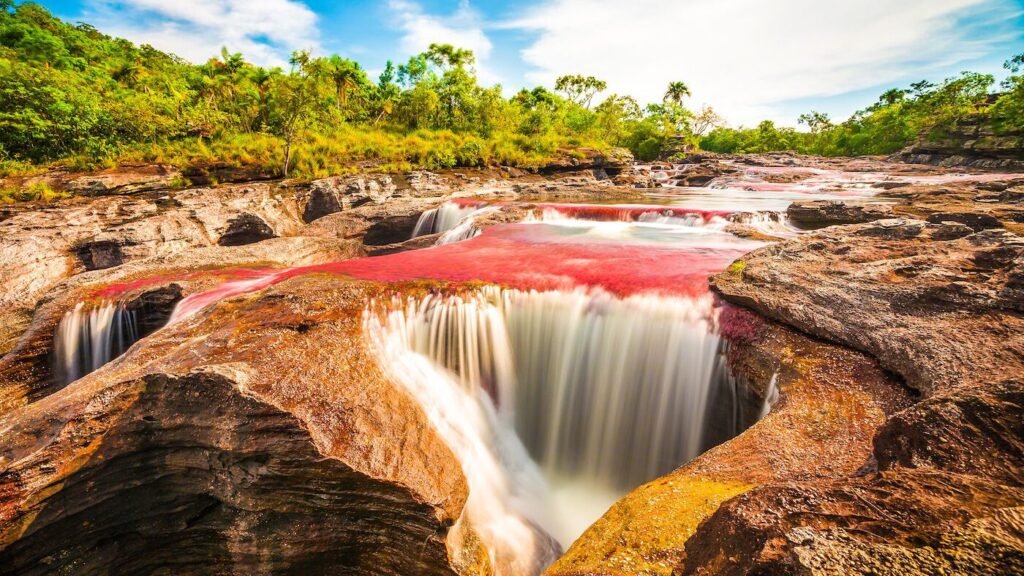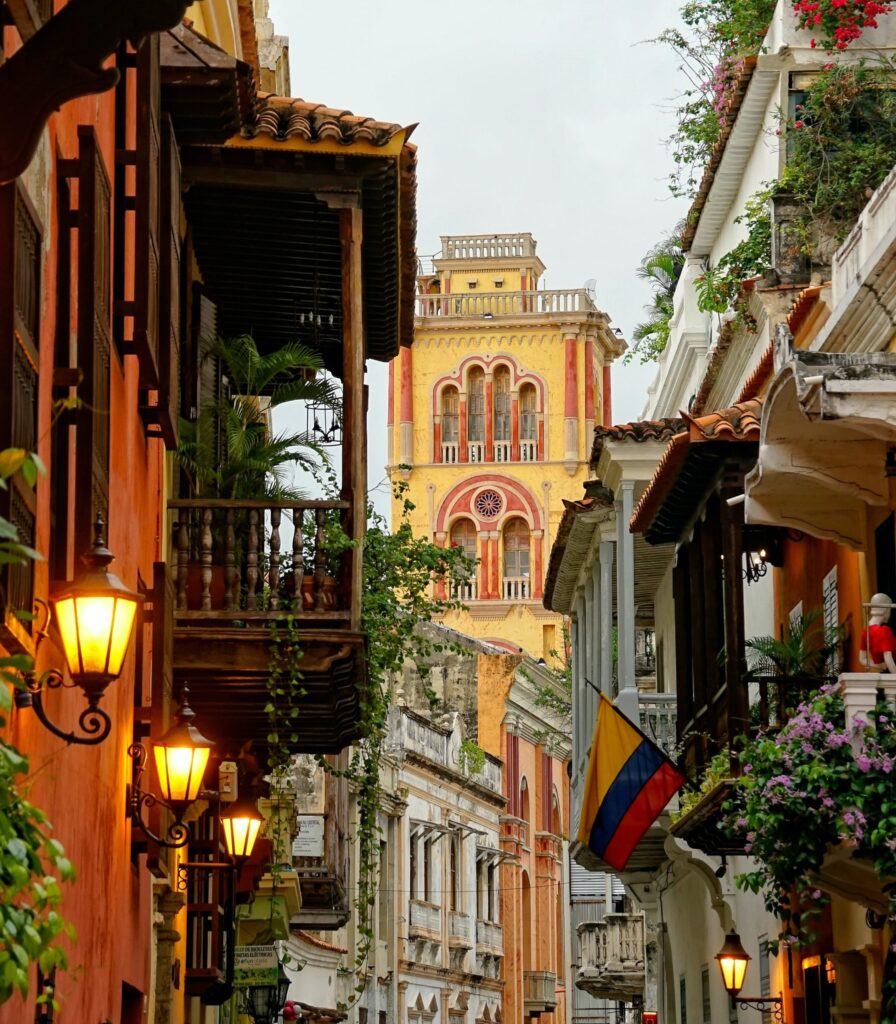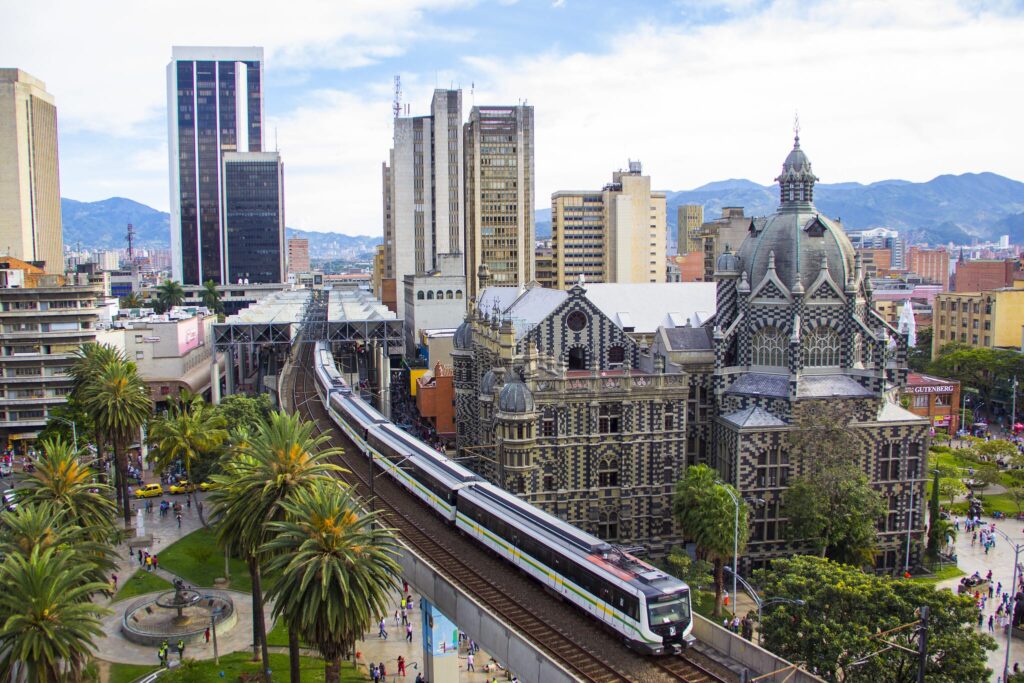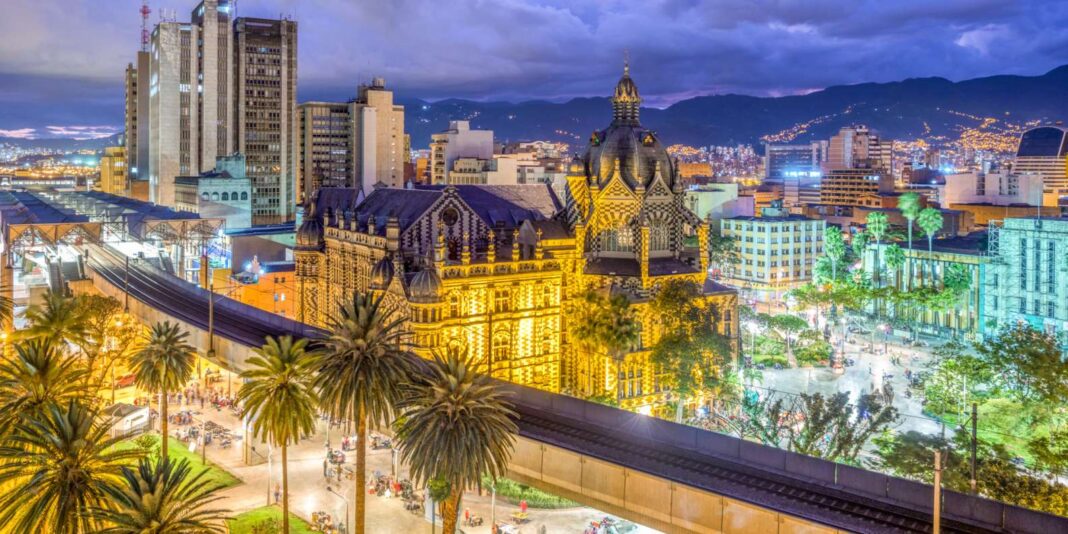After returning for my Colombia trip, I thought I would use this video to share my best Colombia travel tips with you to give you all the information needed to prepare your own trip to this very diverse country. I started off in Cartagena with the beautiful colonial old town, and i visited the Caribbean Islands, which are nearby. And then we had it down to Medellin, where we learned about transformation of the country. And we saw one of the most beautiful panoramas I’ve ever seen. Then it was time to visit the capital, Bogota, where said goodbye to David and said hi to another friend of mine, Stefan. And within my went to Cali where we learned to dance salsa. We went hiking and we went tubing and finished off the trip in Santa marta, again at the Caribbean coast where we visited the most beautiful beaches in Colombia and went hiking in the mountains around Menorca.

So all together this trip was about six weeks. It’s a pretty good mixture and showcases a lot of the diversity Colombia has to offer. Because of the location of Colombia. This country is actually a year round travel destination, especially when you want to go to the Caribbean coast. You can go there actually year round. Nevertheless, if you are really limited in the time you have, you want to be on the safe side or you want to hike the Lost City trek, then you should focus on the dry season, which is lasting from December to March and from July to August. But keep in mind the public holidays, because when the Colombians have the holidays, they like to travel to the popular tourist spots and then it’s really hard for you to get accommodation there and the prices in general are going up. So try to avoid the Christmas time until mid of January as well as Easter and the summer holidays, which are lasting from mid of June until July. My personal tip would be to go in the low season on the shoulder season because we’ve been travelling actually in the rainy season from May to the middle of June. This way we avoided the public holidays and we still had fairly good weather in almost all the destinations we’ve been to.

Only in Bogota was a little bit chilly, but the Caribbean coast was totally fine, and even cities like Medellin or Cali, where we had actually the rainy season, the rain was only happening in the afternoon like strong showers in the late afternoons. So we were still able to explore most of the places being dry. In terms of getting around in Colombia, you actually have two main options. The cheapest and most eco friendly option is to use long distance buses. Here I would recommend to two companies because they are operating throughout the whole country and they’re actually the most comfortable ones. And this is Expreso, Brasilia and Bolivar Regional. The only problem which you will see when booking long distance buses is the travel time because of the topography, the hilly topography of the country. It takes you a long time to get from one place to the other. So, for example, to go from Bogota to Medellin, it will take you about 9 to 10 hours on the bus, whereas it will take you about only one hour to fly there. The second option, therefore, is flying. Domestic flights are also fairly cheap, not as cheap as buses. So, for example, Bogota, Medellin, on the bus would cost you 20 to €25, whereas flying there with checked luggage would cost you around 80 to €100. But the flight time is just one hour. So flying less eco friendly but way faster. Once you are at a destination, you can travel by taxi. You can use motor taxis when you are in a more remote place, or you can use Uber. But Uber is not really officially allowed. So you can use the app and you can book your ride but can’t do that when you’re, for example, in places where it’s regulated, for example, in airports, it’s really hard because the police is cracking down on the Uber drivers.

As you’ve seen from my trip, I was actually using about one week per destination, and that would also be my recommendation. So if you only have about two weeks, then you should decide on like maybe two destinations to have enough time to also enjoy your time there, because each destination has a lot of things to do as you’ve seen in the video series. So if you have about 2 to 3 weeks and you want to go to the beach, you should focus on Cartagena and Santa marta. Santa Marta alone, you can spend about two weeks to do all the stuff you’ve seen in my video because you have Minka there, so you can go hiking. Then you have the beaches so you can enjoy your time at the beaches, go tubing, have some beach parties, some nice drinks, and then you can head down to Cartagena, see a little bit of the colonial city, go to the Caribbean islands nearby. This is a really nice 2 to 3 week trip or you keep it a little bit shorter at the beach and then you do the Lost City trek, which actually takes about oh, depends on which itinerary you take, but it takes about four days, five days, maybe six days if you want to spend more time there. Another 2 to 3 week itinerary would be to combine the Caribbean with the destination within the country. And for this I really recommend to go to Medellin because Medellin actually has direct connections to both cities, to Santa marta as well as Cartagena. When you have two weeks, you can you can stay maybe one week in Cartagena and one week down in Medellin. If you have three weeks, you can combine it with Santa marta or you do just Santa marta and Medellin as you wish. If you have more time and you want to see as much of Colombia as possible, I think you would need to calculate with about 2 to 3 months to really travel Colombia in depth. And then you can also go to places I haven’t really been able to feature because I was just simply running out of time.
Good news is Colombia is one of the cheapest destinations you can travel to in South America. It is not as cheap as Bolivia, but I would still consider it being a budget destination. But as for many other countries in Latin America, it is always dependent on where you go. So really popular tourist destinations such as Cartagena have a way higher price tag than off the beaten path destinations like, for example, Rincon Lima. And that means, especially when you look into accommodation, the prices are almost double if you go to the expensive destinations within the country. So for our example of Rincon demand Cartagena You would pay for a double, a private double in Cartagena, you would pay about €50, whereas in Rincon de Mar you would only pay about €22. The same goes for dorms where you spend €7 for a bed in a dorm. In places like Rincon, you would spend about €12 for a place in a dorm in Cartagena. So you really need to find a good balance if you are on a budget. If you want to eat out, you need to calculate with about 4 to €10 for eating in a restaurant. Again, depending on where you are eating out. Speaking of the food, the Colombian cuisine is also very regional. So if you go, for example, to the Caribbean coast, you should really look into eating fish with coconut rice. Whereas when you go to places like Medellin and the Antioquia region, you have more hearty meals. Like there, for example, is the one they have Paisa, which is a pure heart attack because this is what people used to eat when they were really hard working at the farms. So you should always look into the regional cuisine depending on where you are and the food is really good. What is amazing everywhere in Colombia is fruits like this is probably one of my favorite parts of the country, is just the sheer variety of delicious fruits. And this is also the reason why I wasn’t really eating lunch that often.

I actually just got some fruits at the market or got a coconut from a street vendor and that was basically my snack throughout the day. So when you come to Colombia, eat the regional food, try the street food. If you are on a budget, stick to the street food and maybe go shopping in the supermarkets from time to time. And in matters of drinks, alcoholic drinks. Of course, beer is what everybody likes to drink also in Colombia. And there I would recommend trying to craft beers from three cold areas and from the Bogota beer Company pretty good. And if you’re not so much into alcohol, you should definitely try all the juices because the same reason you have amazing variety of fruits. So the juices there are cheap and they are really good and delicious. Other than that, of course you should try the Colombian coffee and if you get a chance to visit a coffee farm, best to try it there. One of the topics which is still holding many people back from visiting the country is safety. But as I told you in the video episode from Medellin, the country went through a big transformation process and nowadays the country is as safe to visit as it is to visit, for example, countries like Chile, Peru or Argentina. But it still is not on a safety level like Scandinavia or Germany. So you should, of course, follow general safety rules, which I actually wrote down in an article which you can find up here, and you should use your common sense if you do this and if you inform yourself at the destination when you arrive in your hospital or in your hotel and you ask which areas are safe to visit, at which time of the day, then chances are high you won’t get into any trouble travelling through the country. This being said, it is always a good idea to have travel insurance just in case. But because of the diversity of the country, it is always depending on where you go in matters of what you pack.
I made a whole packing list for South America and also for Colombia, which you can check out here. Apart from the packing list, I would say the most important items you should take when you travel to Colombia is for me, it was boardshorts. Definitely take Boardshorts because you can use them for swimming. But also throughout the day a rain jacket because I was visiting in the rainy season. Thin pants, especially for hiking in the jungle and the fleece jacket for colder nights. Last but not least, let’s talk about where to sleep. As I said, the touristic infrastructure in Colombia is constantly improving. So at the touristic hotspots, you have a wide range of accommodation options you can choose from. You have the traditional hotels as well as family run bed and breakfasts and more and more really cool modern hostels you can stay at.

